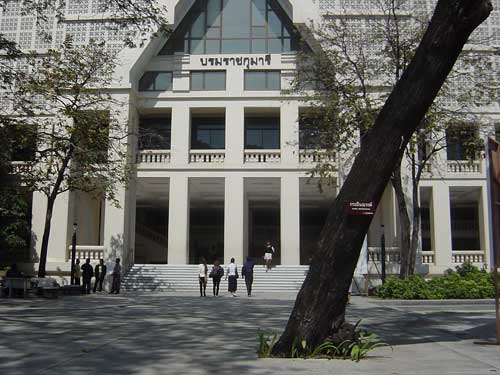Lots of activity this month. Dr Craig Warren Smith, whose previous lecture at Cula University was well received by many of us, will be introducing the Shambhala approach to Buddhism March 25th. Shambhala International grew from the teachings of Chgyam Trungpa, based in the Tibetan Lineage.
What is Shambhala?
A Lecture in Chulalongkorn University’s Series
“Buddha in the 21st Century”
March 25, 2 pm,
Room 708, Boromratchakumari Bldg.,
Faculty of Arts, Chulalongkorn University,
15 minutes walk from Siam BTS (See maps/directions below)
Talk is free of charge and no reservation is required.
(Note: the timing of this talk clashes with the Sayadaw U Jotika talk at DMG Books. It was not possible to re-shcedule so you will have to choose)
Topic:
Shambhala is an ancient secular tradition with outer, inner and secret aspects — at once intended as a method of achieving a harmonious social order and a way of quelling discord in one’s mind.
Shambhala has long fascinated Westerns since it was first discovered by the British Theosophical Society more than 100 years ago. Pioneers such as Madame Blavatsky called it “shangri-la,” a romanic lost kingdom that popularized in books and films, such as “Lost Horizon” and “South Pacific”. In fact, it is a serious spiritual method, connected with Tibet’s robust folk tradition, e.g. the legend of Gesar, and Buddhist tantras, such as the Kalachakra. Though pre-Buddhist, the tradition of Shambhala is the hidden teaching of some of Tibetan Buddhism’s most significant contemporary exponents, such as the late Chogyam Trungpa and His Holiness the Dalai Lama.
Relevent to the “Buddha in the 21st Century” lecture Series at Chulalongkorn University, is that Shambhala does not emphasize the attrainment of individual enlightenment. Rather, it fosters “enlightened society,” and it explicitly aims at using “spiritual warriorship” to achieve a radical course-correction in social systems that have lost their balance with nature.
Shambhala principles are conveyed by the organization Shambhala International, which has 175 meditation centers around the world, including one located in Bangkok. Though this organizations, teachings of Shambhala are expressed to the public by means of a series of weekend programs, called Shambhala Training, to be introduced in Bangkok for the first time April 3,4,5
Speaker:
Prof Craig Warren Smith, a Senior teacer of Shambhala Buddhism, now in residence at Chulalongkorn University’s Center for Ethics of Science and Technology will present the lecture. For more than 20 years a Shambhala training instructore, he will lead the upcoming training in Bangkok, which will include the participaition of Chulalongkorn’s professor Dr. Soraj Hongladarom as guest speaker.
His lecture March 25 will overview of Shambhala teachings and suggest how and why Shambhala principles are currently being embraced as a complement to conventional Buddhist practice.
Directions:
Here is a google earth photo. Walk down Henri Durant Road for 820 meters. The entrance is after you have passed under a foot bridge. Note, there are numerous entrances to various parts of the university, but you need the right one, after the footbridge. Once through the entrance look for the tall building off towards the right. Talk is on the 7th floor, Boromratchakumari Building room 708
For more details, contact (Englsih or Thai)
—
Soraj Hongladarom
Department of Philosophy, Faculty of Arts
Chulalongkorn University
Bangko 10330, Thailand
Tel. +66(0)2218 4756 Fax +66(0)2218 4755
Director,
Center for Ethics of Science and Technology
http://cestchula.wordpress.com/
If entering via taxi it will have to take a slightly roundabout route within the Chulalongkorn compound.
Here is the view as you come through the correct entrance to the university. Turn right as you enter (taxis are forced to turn left and circle round).

Boromratchakumari Building Entrance. It is the tallest building on the campus:

